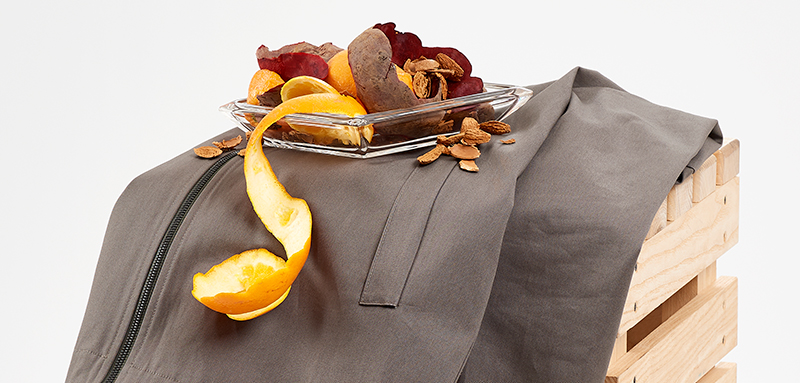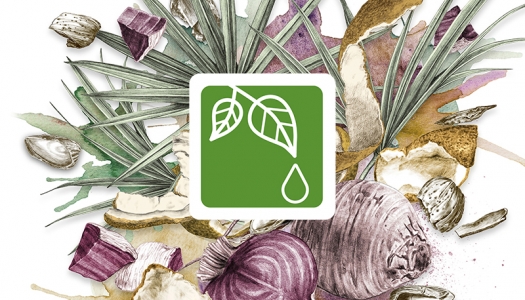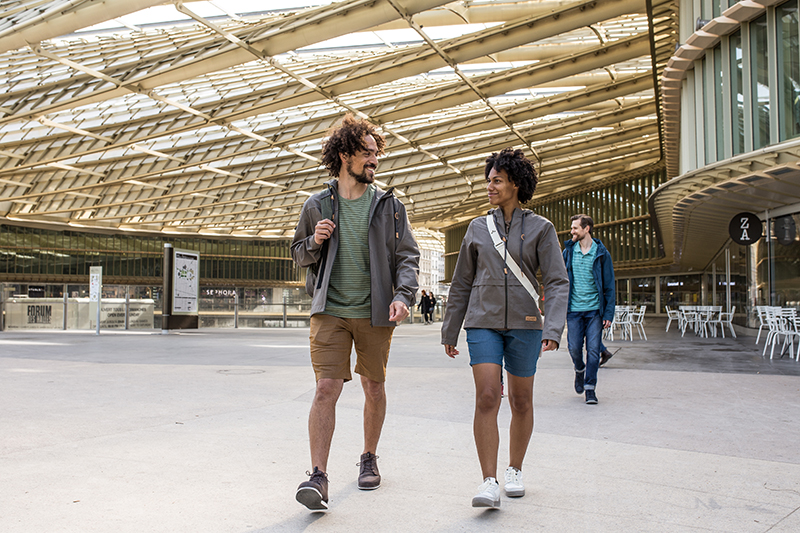
Colorful yet still green
Eco-friendly color for your bags, backpacks and apparel
Whenever possible, we use materials that can be dyed with environmentally friendly processes that produce less emissions. Lower amounts of water and energy are also consumed.
And as you can see, the fabrics are just as colorful as those dyed with conventional processes. Easy on your eyes, and easy on the planet!
Environmentally friendly dyeing processes are part of the VAUDE Green Shape criteria. Find out more here
To date, we have only been able to use this technology for a selection of colors and yarns.
We are currently using it primarily in our plaid fabrics such as trekking shirts and blouses as well as wool fabrics, several fleece fabrics and everyday wear.
Less energy, less emissions
In the yarn dye process, the yarn is first spun and then dyed. This technique is mainly used for natural materials, but also for plaid fabrics.

According to data provided by our suppliers, this process not only reduces the emissions caused by the dye process by 62 percent; it also requires 89 percent less water.
Because of the fact that color pigments are not washed out again during rinsing processes in the ecolour process, 63 percent less dye chemicals are required. Due to the reduction of rinsing cycles, this dye process also saves 63 percent energy.
In the yarn dye process, the yarn is first spun and then dyed. This technique is mainly used for natural materials, but also for plaid fabrics.
Ecru - Dyestuffs from natural materials

The selection of the dyestuffs themselves is also an important factor in reducing the high environmental impact of dyeing. Our ecru colors come entirely from renewable resources, such as orange peel, herb and beet residual waste. This upcycling of food stuffs that would otherwise end up being thrown out makes ecological and economic sense.

|
Ecru dyes
Ecru dyes are bluesign® and GOTS certified and are as long-lasting, washable and lightfast as synthetically produced dyes. |
Natural look
There's another special feature in knitwear: we don't dye the fabric but rather the finished T-shirt. This creates a natural look that is enhanced by washing and wearing.
Thus far, these dyes have only worked with cellulose materials such as organic cotton. We will use these colors starting in the Summer 2020 season for one outfit from our Urban Apparel Collection and for one kids’ jacket. In the Urban Life Redmont series, the men's T-shirt, pullover and 1L jacket as well as women's T-shirt, and 1L jacket (available in S20 and S21) are dyed with these ecru shades.

In the Urban Life Redmont series, the men's T-shirt, pullover and 1L jacket as well as women's T-shirt, and 1L jacket (available in S20 and S21) are dyed with these ecru shades.
Nevertheless, we want to expand our use further and plan to use the dyes, which are obtained from food waste, to other parts of our collection in the future.
| GRI: | 301-1 |




